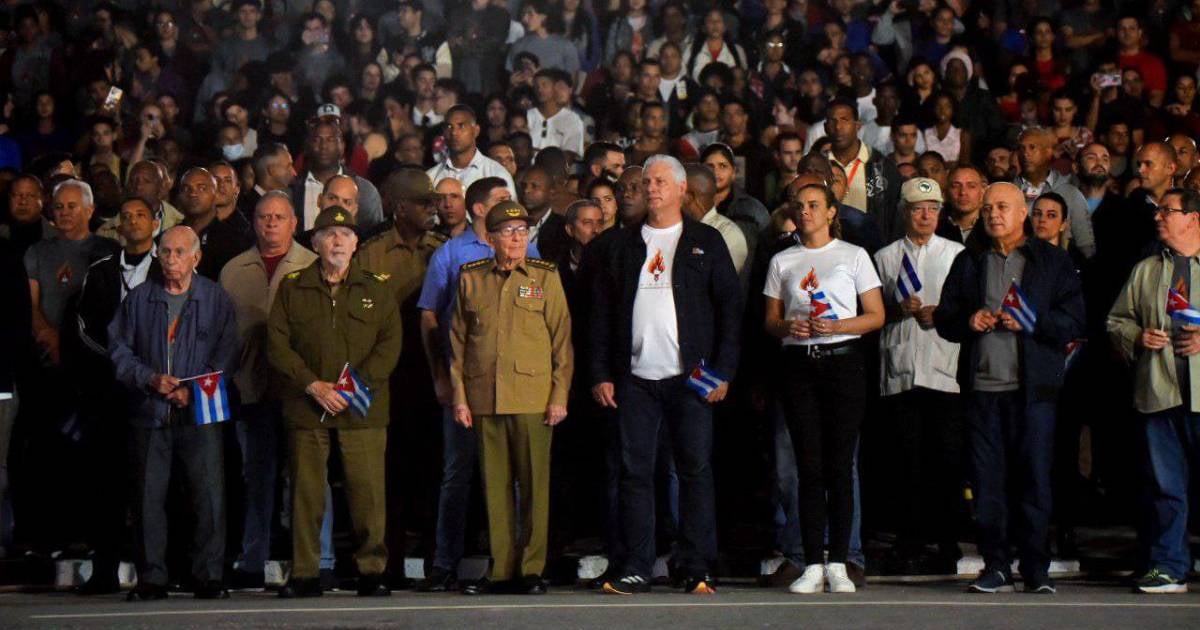On the evening of January 27th, in Havana, General Raúl Castro Ruz made a public appearance at the traditional Torchlight March. This event commemorates the 172nd anniversary of the birth of Cuba's National Hero, José Martí. Alongside Castro, the event featured appearances from the current leader Miguel Díaz-Canel Bermúdez and historic figures such as commanders Ramiro Valdés Menéndez and José Ramón Machado Ventura.
Raúl Castro's presence is perceived as part of a regime strategy to strengthen the faltering image of Díaz-Canel, who is grappling with a decline in popularity amid growing public discontent over food shortages, power outages, repression, and rising extreme poverty in Cuba. Traditionally a massive gathering of youth, the march now showed moderate turnout, with the most prominent faces in the media being those of aging leaders.
Amid a severe economic and social crisis characterized by sporadic protests and a mass exodus of young and working-age individuals, Castro's appearance aims to project an image of governmental unity and stability. However, for many Cubans, his public return highlights the need to rely on a historical leader at a time when Díaz-Canel lacks sufficient popular support to lead independently.
Raúl Castro's Recent Public Engagements
In recent months, Raúl Castro has increased his public appearances, marking a shift from his previously reserved profile. This heightened visibility appears to be a response to the need to project stability and leadership during a period of institutional fragility.
On December 19, 2024, Castro attended the Fourth Ordinary Session of Parliament, where he surprised attendees by instructing legislators to stand and raise their fists as a sign of unity. This symbolic gesture, although puzzling to some, aimed to convey strength in the face of the country's challenges. Shortly thereafter, he presided over a posthumous tribute to commander Julio Camacho Aguilera, reaffirming his prominence in high-profile ceremonies.
Last week, he oversaw the Bastión 2024 Strategic Exercise, a crucial military event intended to reinforce the country's "invulnerability." Accompanied by Miguel Díaz-Canel and other government leaders, his presence at the start of these maneuvers underscored his role in both military and political spheres.
Beyond his involvement in military and political acts, Raúl Castro has sought to present a more approachable image to the population through visits to social institutions, such as a special school in December 2024, and by presenting official recognitions to distinguished individuals.
His participation in these events seeks to reinforce the perception of continuity in the Communist Party's historic leadership amid growing government discredit. Collectively, these appearances bolster the narrative of regime control and stability during a critical period for Cuba, where social demands and the economic crisis pose mounting challenges to the regime.
Key Questions About Raúl Castro's Role in Cuba
Why is Raúl Castro appearing more frequently in public?
Raúl Castro has increased his public appearances to project stability and leadership amid Cuba's political and economic fragility.
What challenges is Miguel Díaz-Canel currently facing?
Díaz-Canel is dealing with a popularity crisis due to public discontent over food shortages, power outages, and rising poverty.
How does Raúl Castro's involvement impact the perception of the Cuban government?
His involvement aims to convey an image of unity and continuity, reinforcing the regime's narrative of control and stability.
